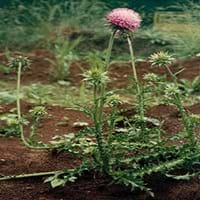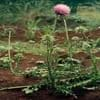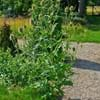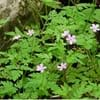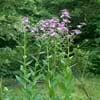Life Span
Biennial
Perennial
Type
Bulb, Flowering Plants
Grass
Origin
World/Pandemic, Europe, Asia
North America, Canada, Mexico
Types
Crocus tommasinianus, Crocus etruscus, Crocus vernus, Crocus cambessedesii
Bigleaf hydrangea, Hortensia, Smooth hydrangea, Oakleaf hydrangea, Annabelle
Habitat
gardens, Grassland, open Woodlands, orchards, Pastures, tropical environments
Forest edges, Hillside, Woods
USDA Hardiness Zone
2-10
Not Available
Sunset Zone
21,22
1a, 1b, 2a, 2b, 3a, 3b, 4, 5, 6, 7, 8, 9, 10, 11, 14, 15, 16, 17, 18, 19, 20, 21, 22, 23
Habit
Upright/Erect
Upright/Erect
Flower Color
Red, Violet
Blue, Dark Purple, Light Purple, Red, White
Flower Color Modifier
Bicolor
Bicolor
Fruit Color
Not Available
Not Available
Leaf Color in Spring
Green, Dark Green
Green, Light Green, Blue Green, Gray Green
Leaf Color in Summer
Dark Green
Light Green
Leaf Color in Fall
Dark Green
Red, Green, Orange, Blue Green, Gray Green, Bronze
Leaf Color in Winter
Light Green
Tan, Sandy Brown
Leaf Shape
Ovate
Oblovate
Plant Season
Spring, Summer, Winter
Spring, Summer, Fall, Winter
Sunlight
Full Sun, Partial Sun
Full Sun, Partial Sun
Growth Rate
Very Fast
Fast
Type of Soil
Clay, Loam, Sand
Clay, Loam, Sand
The pH of Soil
Acidic, Neutral, Alkaline
Acidic, Neutral, Alkaline
Soil Drainage
Well drained
Average
Bloom Time
Spring, Late Spring, Early Summer, Summer
Early Summer, Summer, Late Summer
Tolerances
Pollution, Drought, Salt, Soil Compaction
Pollution, Soil Compaction
Where to Plant?
Container, Ground
Container, Ground
How to Plant?
Seedlings
Seedlings, Stem Planting
Plant Maintenance
Low
Medium
Watering Requirements
Average Water Needs, Do Not over Water, Never Over-water, Requires regular watering
Not Available
In Summer
Lots of watering
Drought Tolerant, Average Water
In Spring
Moderate
Moderate
In Winter
Average Water
Average Water
Soil pH
Acidic, Neutral, Alkaline
Not Available
Soil Type
Clay, Loam, Sand
Not Available
Soil Drainage Capacity
Well drained
Not Available
Sun Exposure
Full Sun, Partial Sun
Not Available
Pruning
Prune to stimulate growth, Remove damaged leaves, Remove dead leaves, Remove deadheads
Remove damaged leaves, Remove dead branches, Remove dead leaves
Fertilizers
Nitrogen, Phosphorous, Potassium, Requires high amount of nitrogen
All-Purpose Liquid Fertilizer
Pests and Diseases
Insects, Red blotch
Red blotch
Plant Tolerance
Not Available
Pollution, Soil Compaction
Flower Petal Number
Not Available
Single
Foliage Texture
Coarse
Fine
Foliage Sheen
Glossy
Not Available
Invasive
Yes
Not Available
Self-Sowing
Yes
Not Available
Attracts
Flying insects
Bees, Flies
Allergy
Diarrhea, Nausea, Vomiting
Chest tightness, Diarrhea, Dizziness, Nausea, Vomiting
Aesthetic Uses
Beautification, Showy Purposes
Not Available
Beauty Benefits
Not Available
Not Available
Edible Uses
Yes
Not Available
Environmental Uses
Air purification, Food for insects
Air purification
Medicinal Uses
Unknown, Unknown
Fever, Kidney problems, Urinary tract problems
Part of Plant Used
Stem
Flowers, Root
Other Uses
Decoration Purposes
Not Available
Used As Indoor Plant
No
Not Available
Used As Outdoor Plant
Yes
Yes
Garden Design
Not Available
Not Available
Botanical Name
CARDUUS nutans
PANICUM virgatum 'Northwind'
Common Name
Musk Thistle, Nodding Thistle
Northwind Switchgrass, Switchgrass
In Hindi
कस्तूरी थीस्ल
Hydrangea
In German
Nickende Distel
Hortensie
In French
Musk Thistle
Hortensia
In Spanish
Cardo de almizcle
Hortensia
In Greek
musk Thistle
υδραγεία
In Portuguese
musk Thistle
Hortênsia
In Polish
Musk Thistle
Hortensja
In Latin
Carduus MOSCHUS
Hibiscus
Phylum
Magnoliophyta
Not Available
Class
Magnoliopsida
Not Available
Order
Asterales
Not Available
Family
Asteraceae
Not Available
Genus
Carduus
Not Available
Clade
Angiosperms, Asterids, Eudicots
Not Available
Tribe
Cynareae
Not Available
Subfamily
Carduoideae
Not Available
Number of Species
Not Available
Not Available
Season and Care of Musk Thistle and Northwind Switchgrass
Season and care of Musk Thistle and Northwind Switchgrass is important to know. While considering everything about Musk Thistle and Northwind Switchgrass Care, growing season is an essential factor. Musk Thistle season is Spring, Summer and Winter and Northwind Switchgrass season is Spring, Summer and Winter. The type of soil for Musk Thistle is Clay, Loam, Sand and for Northwind Switchgrass is Clay, Loam, Sand while the PH of soil for Musk Thistle is Acidic, Neutral, Alkaline and for Northwind Switchgrass is Acidic, Neutral, Alkaline.
Musk Thistle and Northwind Switchgrass Physical Information
Musk Thistle and Northwind Switchgrass physical information is very important for comparison. Musk Thistle height is 90.00 cm and width 30.00 cm whereas Northwind Switchgrass height is 150.00 cm and width 90.00 cm. The color specification of Musk Thistle and Northwind Switchgrass are as follows:
Musk Thistle flower color: Red and Violet
Musk Thistle leaf color: Green and Dark Green
Northwind Switchgrass flower color: Blue, Dark Purple, Light Purple, Red and White
- Northwind Switchgrass leaf color: Green, Light Green, Blue Green and Gray Green
Care of Musk Thistle and Northwind Switchgrass
Care of Musk Thistle and Northwind Switchgrass include pruning, fertilizers, watering etc. Musk Thistle pruning is done Prune to stimulate growth, Remove damaged leaves, Remove dead leaves and Remove deadheads and Northwind Switchgrass pruning is done Remove damaged leaves, Remove dead branches and Remove dead leaves. In summer Musk Thistle needs Lots of watering and in winter, it needs Average Water. Whereas, in summer Northwind Switchgrass needs Drought Tolerant, Average Water and in winter, it needs Average Water.
